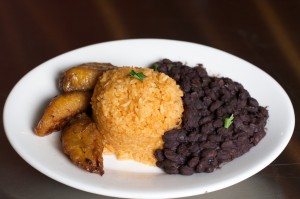
DID YOU KNOW?
Rice and Beans, when eaten together, form a complete high fiber vegetarian protein? Beans and grains have a symbiotic relationship in which the amino acids of each complement one another to form a complete protein, which is the foundation for the growth and development in humans.
RICE
Rice is one of the few foods in the world which is entirely non-allergenic and gluten-free. Rice is a grain belonging to the grass family, and is consumed by nearly one-half the entire world population.
Many countries and continents like South America & Asia are dependent on rice as a staple food. Most believe the roots of rice come from 3000 BC India, where natives discovered the plant growing in the wild. Cultivation and cooking methods are thought to have spread to the west rapidly and by medieval times, southern Europe saw the introduction of rice as a hearty grain. The first cultivators of rice in America did so by accident after a storm damaged ship docked in the Charleston, South Carolina harbor. The captain of the ship handed over a small bag of rice to a local planter as a gift, and by 1726, Charleston was exporting more than 4,000 tons of rice a year.
Rice, especially brown rice, is an extremely healthy food; it’s naturally non-fat, cholesterol-free and sodium-free. It is a complex carbohydrate containing only 103 calories per one-half-cup serving. Complex carbohydrates are digested slowly, allowing the body to utilize the energy released over a longer period which is nutritionally efficient. Rice contains useful quantities of potassium and the B vitamins; thiamin and niacin. An average portion of rice (50g) provides about 11% of the estimated average daily requirement of protein.
The U.S. Department of Agriculture dietary guideline using the Eating Right Pyramid suggests that the foods lowest in fats, oils and sugars (for example fruits, vegetables, dry beans and grains like rice) should make up the largest portion of our daily meals.
BLACK BEANS
All beans are naturally low in fat, and provide an excellent source of dietary fiber, complex carbohydrates, protein, magnesium, essential B vitamins, iron & antioxidants. The high fiber contents can help naturally lower cholesterol and keep blood sugar levels from rising too rapidly, making them a wise choice for people with diabetes, and those with fat restricted diets. Eaten regularly, beans can provide protection against heart disease, cancer and aging.
Beans come in all sizes and colors, so why should you choose black beans over other beans?
The darker the beans coat the higher its antioxidant activity. Since black is as dark as it gets, Black Beans contain the most antioxidant activity than any beans, followed by red, brown, yellow and white beans. The darker colored seed coats are associated with higher levels of flavanoids. Black beans also contain the trace mineral molybdenum that can help detoxify sulfites, a preservative that causes headaches, stomach aches and disorientation. Even if you’re not sensitive to sulfites, black beans offer a superior edge to other beans as they are loaded with antioxidant compounds…black is better!

[…] Therefore, it is always important to consider how food is prepared before determining if it is healthy (source). […]